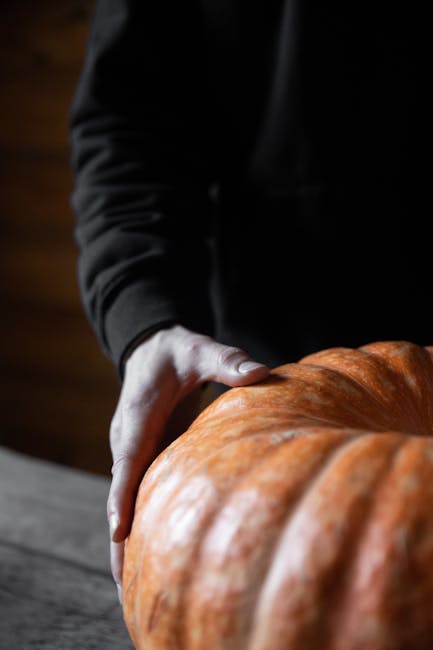The Ultimate Guide to TikTok Ads Optimization
Understanding the TikTok Ads Ecosystem and Core Principles
TikTok has rapidly evolved from a burgeoning social media platform into a formidable advertising powerhouse, demanding a nuanced and sophisticated approach to digital marketing. Its unique algorithm, which prioritizes content based on user engagement rather than social graphs, fundamentally reshapes how advertisers must conceive, execute, and optimize their campaigns. Unlike traditional platforms where audience targeting might be the predominant lever for success, on TikTok, creative execution holds unparalleled importance. The platform’s emphasis on authentic, short-form, highly engaging video content means that ads must seamlessly blend into the organic user experience to capture attention and drive action. Optimizing TikTok ads is not merely about adjusting bids or refining targeting parameters; it’s a holistic process that begins with a deep understanding of the platform’s culture and extends through meticulous creative development, precise audience segmentation, strategic bidding, and continuous performance analysis. Without a robust optimization strategy, even well-funded campaigns can quickly underperform, leading to wasted ad spend and missed opportunities in a highly lucrative market.
The core pillars of TikTok ad success revolve around three interconnected elements: Creative, Targeting, and Bidding. Each pillar requires dedicated optimization efforts, but their synergy is what truly unlocks peak performance. A compelling creative without the right audience or an inefficient bidding strategy will fail, just as precise targeting with a generic, unengaging ad will yield poor results. Therefore, optimization must be approached with a comprehensive mindset, continually testing and refining each component in relation to the others. Before diving into the intricacies of optimization, foundational elements must be securely in place. This includes proper TikTok Ads Manager account setup, which involves linking your business profile, setting up billing information, and understanding the dashboard interface. Crucially, the TikTok Pixel must be correctly installed on your website or integrated with your app to track user actions, such as page views, add-to-carts, and purchases. Accurate event tracking is the bedrock of effective optimization, providing the data necessary to measure campaign performance, build custom audiences, and enable TikTok’s algorithm to find users most likely to convert. Without reliable data, optimization efforts are akin to navigating without a compass. Furthermore, establishing a logical ad account structure from the outset—organizing campaigns by objective, ad sets by audience or creative themes, and ads by specific variants—facilitates easier analysis and more efficient A/B testing, setting the stage for subsequent optimization phases.
Mastering Creative Optimization: The Apex of TikTok Ad Performance
Creative excellence on TikTok is arguably the single most important factor determining ad success. The platform’s unique content consumption patterns mean that ads must feel native, authentic, and entertaining to resonate with users who are accustomed to an endless stream of short, engaging videos. This necessitates a “TikTok-first” creative philosophy, moving away from polished, traditional advertising aesthetics towards a more raw, relatable, and often spontaneous style. The objective is not to interrupt the user experience but to become part of it, offering value or entertainment within the ad itself.
The “TikTok-First” Creative Philosophy: Authenticity Over Polish
The hallmark of successful TikTok ad creative is its ability to blend seamlessly into the user’s “For You Page” (FYP). This means adopting the visual language, editing styles, and pacing common to organic TikTok content. Authenticity trumps high production value. Users prefer real people, genuine reactions, and less scripted scenarios over highly produced, corporate-looking advertisements. This often involves using vertical video, capturing content on mobile phones, incorporating trending sounds, and adopting a conversational, direct-to-camera style.
- Hook Strategy: Capturing Attention in 3 Seconds: The first 1-3 seconds of any TikTok ad are critical. Users scroll relentlessly, and if an ad doesn’t immediately grab their attention, it will be skipped. Effective hooks can include:
- Question-based hooks: Posing a relatable question that addresses a pain point.
- Problem/Solution hooks: Immediately presenting a problem and hinting at a solution.
- Intrigue or mystery hooks: Showing something unexpected or surprising.
- Direct address hooks: Speaking directly to the viewer with a bold statement or call-out.
- Trend-based hooks: Utilizing a popular sound, filter, or challenge at the very beginning of the video. The goal is to stop the scroll and compel the viewer to watch further.
- Sound & Music Integration: Crucial for Engagement: Sound is not optional on TikTok; it’s an integral part of the experience. The platform’s algorithm often pushes content using trending sounds. Incorporating popular, rights-cleared music or trending audio clips can significantly boost engagement and virality. It’s vital to research what sounds are currently popular within your target audience’s demographic or niche and integrate them thoughtfully. Beyond trending sounds, voiceovers and sound effects can enhance storytelling and convey information more effectively, especially if users watch without volume initially. Remember to include captions for accessibility and for those watching with sound off.
- Visual Storytelling: Native Format Utilization (Vertical Video): TikTok is built for vertical video (9:16 aspect ratio). Any other format will appear less professional and provide a suboptimal viewing experience. Content should be designed specifically for this vertical canvas, utilizing the entire screen. Visual storytelling should be concise, dynamic, and visually engaging. Rapid cuts, dynamic camera movements, and on-screen text overlays are common and effective techniques.
- Text Overlays and On-Screen Prompts: Given that many users watch videos with the sound off, especially in public spaces, on-screen text overlays are essential for conveying key messages, benefits, or calls to action. These should be concise, easy to read, and strategically placed so as not to obscure important visual elements. Prompts like “Click link in bio” or “Learn more” appearing directly on screen reinforce the call to action.
- Call-to-Action (CTA) Clarity and Placement: A clear, concise, and compelling CTA is vital for conversion. This can be verbal, textual, or a combination. The CTA should appear multiple times throughout the video, especially towards the end, and be reinforced by the clickable button at the bottom of the ad. Experiment with different CTAs (e.g., “Shop Now,” “Learn More,” “Sign Up,” “Download App”) to see which resonates best with your audience and objective.
Leveraging Different Creative Types:
Diversifying creative types and testing various approaches is a cornerstone of TikTok ad optimization. No single creative type guarantees success; rather, a mix of approaches, continually tested and refreshed, will yield the best results.
- User-Generated Content (UGC) Best Practices: UGC is gold on TikTok. It inherently embodies authenticity and relatability, as it comes from real users. This can be genuine product reviews, unboxing videos, testimonials, or creative demonstrations of a product/service in everyday life. When leveraging UGC, ensure it aligns with your brand voice but retains its raw, unpolished feel. Provide clear guidelines to creators but allow for creative freedom. Optimizing UGC means identifying what specific elements (e.g., relatable scenarios, clear benefits, emotional connection) within successful UGC resonate most with your target audience and then replicating or iterating on those elements in future campaigns.
- Influencer-Generated Content (IGC): Partnering with TikTok creators (influencers) can provide highly effective ad creatives. Influencers understand the platform’s nuances and how to connect with their audience. Their content often feels more credible and engaging than brand-produced ads. When working with influencers, establish clear objectives, but grant them creative license to produce content that feels authentic to their style and followers. Optimize IGC by analyzing which creators, content formats, and messaging variations drive the highest engagement and conversions for your specific goals.
- Brand-Produced Content (BPC) with a Native Feel: While UGC and IGC are powerful, brands can also produce their own content that adopts a “native” TikTok aesthetic. This involves shooting with mobile phones, using popular sounds, incorporating trending challenges, or creating quick, engaging tutorials or demonstrations that feel less like an ad and more like organic content. The key is to avoid overly corporate or salesy tones. Optimize BPC by focusing on strong hooks, quick pacing, clear benefits, and a call to action that integrates smoothly into the narrative.
- Spark Ads: Supercharging Organic Posts: Spark Ads allow advertisers to leverage existing organic TikTok posts – either their own or those of creators who have granted permission – and turn them into in-feed ads. This is a powerful optimization strategy because it capitalizes on content that has already proven to resonate organically. Spark Ads often achieve higher engagement rates, lower CPMs, and greater authenticity because they maintain the original creator’s handle and organic comments/shares. Optimize Spark Ads by selecting posts that have high organic view-through rates, comments, and shares, indicating strong intrinsic appeal. Test different Spark Ads against traditional in-feed ads to identify performance disparities.
Creative Testing Methodologies:
Continuous creative testing is non-negotiable for long-term TikTok ad optimization. Ad fatigue sets in quickly on TikTok, meaning even highly successful creatives will eventually experience diminishing returns. A robust testing framework ensures a fresh pipeline of high-performing assets.
- A/B Testing Frameworks for Video Elements: Systematically test different elements of your creatives. This could include:
- Hooks: Different opening 3 seconds.
- CTAs: Variations in wording, placement, or visual presentation.
- Video Length: Short (15s) vs. medium (30s) vs. slightly longer (60s).
- Music/Sound: Trending sound A vs. trending sound B vs. original audio.
- Visual Style: UGC vs. IGC vs. native BPC.
- Messaging: Benefit-focused vs. problem-solution vs. emotional appeal.
- Ensure only one variable is changed per test to accurately attribute performance differences.
- Iterative Creative Development Cycle: Implement a continuous cycle of:
- Ideation: Brainstorm new creative concepts based on insights and trends.
- Production: Create multiple variations of each concept.
- Testing: Launch campaigns to test new creatives against current best performers.
- Analysis: Evaluate performance metrics (CTR, VTR, VCR, conversion rate, CPA).
- Iteration: Scale successful creatives, pause underperforming ones, and develop new variations based on learnings. This agile approach ensures you’re always finding fresh ways to engage your audience.
- Analyzing Creative Performance Metrics (CTR, VTR, VCR, CPC):
- Click-Through Rate (CTR): Indicates how well your ad captures interest and prompts a click. A low CTR suggests the ad isn’t compelling enough to make users want to learn more.
- Video View Rate (VVR) & Video Completion Rate (VCR): VVR measures the percentage of people who watch the entire video (or a significant portion). VCR measures the percentage of people who watch 100% of the video. These metrics indicate how engaging your creative is and if it holds attention.
- Cost Per Click (CPC): Helps evaluate the efficiency of your creative in driving traffic. A high CPC might indicate poor creative or targeting.
- Cost Per Mille (CPM): Cost per thousand impressions. While often tied to bidding, a very low CPM with good engagement metrics can indicate a highly resonant creative.
- Conversion Rate (CVR) & Cost Per Acquisition (CPA): Ultimately, these are the most important metrics for direct response campaigns. They tell you if your creative is not just engaging but also effective at driving desired actions at an acceptable cost.
- Managing Creative Fatigue and Refreshing Ad Assets: Ad fatigue occurs when your audience has seen your ad too many times, leading to declining performance (lower CTR, higher CPM/CPA). Monitor frequency metrics to identify when fatigue is setting in. When it does, it’s time to refresh your creatives. This doesn’t always mean entirely new concepts; sometimes, simply changing the hook, music, or CTA can give a creative new life. Implement a regular schedule for creative refreshes, ideally every 2-4 weeks, depending on your budget and audience size.
Precision Targeting: Reaching the Right Audience
While creative is paramount, reaching the right eyeballs is equally crucial for efficient ad spend. TikTok offers a robust suite of targeting options that, when optimized, can significantly enhance campaign performance. Precision targeting ensures your compelling creatives are seen by users most likely to be interested in your product or service.
Demographic Targeting: Beyond the Basics
- Age, Gender, Location, Language: These are your foundational targeting layers. While seemingly straightforward, optimizing these requires data-driven decisions. For instance, if your product appeals primarily to Gen Z, focusing on younger age brackets is obvious. However, sometimes older demographics (e.g., Millennials who are parents) are surprisingly active on TikTok and represent significant purchasing power. Test different age ranges and analyze performance reports to see if your assumptions hold true. Similarly, be precise with location targeting; if your product is regional, don’t waste impressions on a national audience. Language targeting ensures your ad copy and creative are understood by the audience.
- In-depth Look at User Interests: Granular Selection: TikTok’s interest categories are vast and can be highly specific. These are based on user interactions, content consumption patterns, and engagement with specific hashtags or creators. Optimize by selecting interests that are directly relevant to your product/service. Avoid overly broad categories initially. For example, instead of just “Beauty,” consider “Skincare,” “Makeup Tutorials,” or “Hair Care.” Test multiple, more granular interest groups in separate ad sets to identify which ones yield the highest conversion rates and lowest CPAs. Look for unexpected correlations in your data.
- Behavioral Targeting: Device, Network, Interaction Patterns: TikTok allows targeting based on user behavior within the app or on their device.
- Device: Target by operating system (iOS/Android), device model, connection type (Wi-Fi/cellular), or even carrier. This is particularly useful for app install campaigns or products that are device-specific.
- Interaction Patterns: This is a powerful behavioral targeting option where you can target users who have interacted with specific types of content, hashtags, or creators. For instance, you can target users who have viewed videos related to “fitness challenges,” “DIY crafts,” or “fashion hauls.” This allows for highly relevant ad placement based on demonstrated user interests within the app. Optimize by segmenting your ad sets by different interaction patterns to discover which behaviors are most indicative of high-value customers.
Custom Audiences: Leveraging Your Data
Custom Audiences are a cornerstone of advanced TikTok ads optimization, allowing you to leverage your existing customer data and website visitors. They are crucial for retargeting and building highly qualified audiences.
- Website Visitors (Pixel-Based): The TikTok Pixel tracks user activity on your website. You can create custom audiences of all website visitors, visitors who viewed specific pages (e.g., product pages), or visitors who performed specific actions (e.g., added to cart, initiated checkout, purchased). Optimize by segmenting these audiences. For example, create an audience of “Add to Cart but Not Purchased” for a specific retargeting campaign with a special offer.
- Customer List Uploads (CRM Integration): Uploading your existing customer lists (email addresses, phone numbers) allows TikTok to match them to user profiles. This is incredibly powerful for re-engaging past customers, launching loyalty programs, or targeting high-value segments of your existing customer base. Ensure your list is clean and hashed for privacy. Optimize by segmenting your customer lists (e.g., high-value customers, recent purchasers, inactive customers) and tailoring campaigns to each segment.
- App Activity Audiences: If you have a mobile app, you can create audiences based on specific in-app events, such as app installs, app opens, specific in-app purchases, or reaching certain levels in a game. This is vital for app growth and re-engagement strategies.
- Engagement Audiences (Video Views, Lead Gen Form, Followers): These audiences are built from users who have engaged with your content directly on TikTok:
- Video Views: Target users who have watched a certain percentage of your videos (e.g., 75% or 95%). These are highly engaged users who have demonstrated interest.
- Lead Gen Form: Target users who have opened or submitted your TikTok Lead Generation forms.
- Followers: Target your existing TikTok followers.
Optimize by segmenting these audiences by engagement level (e.g., 95% video viewers are more qualified than 25% viewers) and tailoring your message to their level of familiarity with your brand.
Lookalike Audiences: Expanding Your Reach Intelligently
Lookalike audiences allow you to find new users on TikTok who share similar characteristics and behaviors with your most valuable existing audiences. This is a primary scaling strategy.
- Best Practices for Source Audiences: The quality of your lookalike audience directly depends on the quality of your source audience. Use highly qualified source audiences:
- Website purchasers (best for e-commerce).
- High-value customer lists.
- Top 1% or 5% of video viewers who completed your most engaging creative.
- Users who submitted a lead form.
- Avoid using broad source audiences like “all website visitors” unless your volume of converters is too low to create a meaningful purchaser lookalike.
- Percentage-Based Scaling (1%, 5%, 10%): TikTok allows you to create lookalikes based on a percentage of the population similar to your source audience.
- 1% Lookalike: Smallest audience, most similar to your source, often highest quality but limited reach.
- 5% Lookalike: Broader audience, still good quality, increased reach.
- 10% Lookalike: Largest audience, least similar, but offers maximum reach.
Optimize by testing different percentages. Start with 1% for highest relevance and scale to 5% or 10% if the 1% audience becomes saturated or you need more volume, carefully monitoring CPA as you expand.
- Creating Multiple Lookalikes for Diverse Testing: Don’t rely on just one lookalike. Create lookalikes from different source audiences (e.g., one from purchasers, one from highly engaged video viewers, one from email subscribers) and test them against each other to identify which performs best for your specific campaign objective.
Exclusion Targeting: Preventing Ad Waste
Exclusion targeting is a critical optimization technique to prevent showing ads to users who are unlikely to convert or who have already completed the desired action.
- Exclude existing customers from acquisition campaigns.
- Exclude recent purchasers from general retargeting campaigns (unless you have specific upsell/cross-sell campaigns).
- Exclude people who have filled out a lead form from lead generation campaigns.
- Optimize by regularly updating your exclusion lists and ensuring they are applied to relevant campaigns to avoid ad fatigue and maximize the efficiency of your ad spend.
Audience Segmentation and Consolidation Strategies
- Audience Segmentation: Break down your broad target audience into smaller, more homogeneous groups based on demographics, interests, behaviors, or custom audience criteria. This allows for tailored messaging and more precise optimization.
- Consolidation: As TikTok’s algorithm becomes more sophisticated, sometimes consolidating ad sets into broader audiences, especially for conversion campaigns, can allow the algorithm more freedom to find optimal users. Test both highly segmented and more consolidated approaches. The “broad targeting” strategy, where you allow TikTok’s algorithm to do most of the heavy lifting, especially when paired with strong creatives and accurate pixel data, has shown promising results for many advertisers. This strategy relies on the algorithm’s ability to identify high-value users even within a very broad audience, provided it has enough conversion data to learn from.
Strategic Bidding & Budget Management for Optimal ROI
Bidding and budget allocation are critical levers for optimizing TikTok ad performance, directly impacting cost-efficiency and delivery. The right strategy ensures your ads reach the right people at the right price, driving maximum return on investment (ROI).
Understanding TikTok’s Bidding Options:
TikTok offers several bidding strategies, each suited to different campaign objectives and risk appetites. Understanding their nuances is crucial for optimization.
- Cost Cap: Balancing Cost and Volume: With Cost Cap, you set a maximum average cost per result (e.g., CPA for purchases, CPL for leads). TikTok’s algorithm will attempt to deliver as many results as possible while keeping the average cost per result at or below your specified cap. This strategy aims to maximize volume within a defined cost boundary.
- Optimization Tip: Start with a Cost Cap slightly higher than your target CPA to allow the algorithm sufficient room to learn and explore. If delivery is low, gradually increase the cap. If your CPA is consistently below the cap, you can try to lower it incrementally to drive down costs, but be mindful of potential delivery drops. This strategy is ideal when you have a clear target CPA in mind and want to maintain efficiency while still seeking reasonable volume.
- Bid Cap: Strict Cost Control: Bid Cap allows you to set the absolute maximum amount you’re willing to bid for an individual impression. This offers the most control over your spending per bid but can severely restrict delivery if your bid is too low compared to competitor bids and audience availability.
- Optimization Tip: Use Bid Cap when you have a very strict budget and precise control over ad spend is paramount, even at the cost of delivery volume. This is often employed by experienced advertisers who thoroughly understand their market’s CPMs and have a strong grasp of their desired cost. It’s not recommended for beginners due to the risk of low ad delivery if the bid is too restrictive. Start with a bid slightly above the suggested range to ensure delivery, then incrementally lower it while monitoring performance.
- Lowest Cost: Maximizing Delivery Within Budget: This is TikTok’s default and often recommended bidding strategy. The algorithm automatically bids on your behalf to get the most results possible for your budget, without setting a specific cost or bid cap. It optimizes for the lowest possible cost per result.
- Optimization Tip: This is the easiest strategy to manage and often yields good results, especially during the learning phase. It’s excellent for maximizing volume. When optimizing with Lowest Cost, focus on improving your creatives and targeting to naturally drive down the cost per result. It gives TikTok’s algorithm the most flexibility to find the best opportunities. If you’re experiencing high CPAs, the issue is likely with your creative or targeting, not necessarily the bidding strategy itself under “Lowest Cost.”
- Goal-Based Bidding (e.g., Value Optimization): For conversion campaigns, TikTok may offer advanced options like Value Optimization, where you can instruct the algorithm to optimize for the highest return on ad spend (ROAS) rather than just the lowest CPA. This requires sufficient conversion value data being passed back via the pixel.
- Optimization Tip: If you have reliable revenue data, Value Optimization can be incredibly powerful for driving profitable sales. Ensure your pixel is accurately passing back purchase values. This strategy works best with a larger budget and ample conversion data for the algorithm to learn from.
Choosing the Right Bidding Strategy per Campaign Objective:
The optimal bidding strategy is highly dependent on your campaign’s primary objective.
- Awareness Campaigns (Reach, Video Views):
- Lowest Cost: Best for maximizing impressions or video views within your budget. Your goal is broad exposure, so you want the algorithm to find the cheapest opportunities.
- Consideration Campaigns (Traffic, Lead Generation):
- Lowest Cost: Generally good for maximizing clicks or leads.
- Cost Cap: Consider using Cost Cap if you have a specific target CPL (Cost Per Lead) or CPC (Cost Per Click) you need to adhere to.
- Conversion Campaigns (Purchases, App Installs):
- Lowest Cost: Often the starting point, especially if you’re unsure of your optimal CPA. Allows the algorithm to learn.
- Cost Cap: Recommended once you have a clear target CPA and want to maintain efficiency while scaling. This provides a balance of control and volume.
- Value Optimization: If maximizing ROAS is the ultimate goal and you have sufficient conversion value data.
Budget Allocation and Optimization:
Beyond bidding, how you allocate and manage your budget plays a significant role in optimization.
- Daily vs. Lifetime Budgets:
- Daily Budget: Specifies the maximum amount you’re willing to spend per day. Ideal for ongoing campaigns where you want consistent daily delivery.
- Lifetime Budget: Specifies the total amount you’re willing to spend over the entire campaign duration. TikTok will automatically distribute spending across the campaign period. Useful for campaigns with a fixed end date or specific promotions.
- Optimization Tip: For most ongoing optimization efforts, a daily budget provides more control for incremental adjustments and monitoring. Lifetime budgets can be useful for burst campaigns or promotions where consistent spending across a specific period is desired.
- Ad Set Budgeting vs. Campaign Budget Optimization (CBO):
- Ad Set Budgeting: You set a specific budget for each ad set. This gives you granular control but requires manual management of spending across ad sets.
- Campaign Budget Optimization (CBO): You set a single budget at the campaign level, and TikTok automatically distributes it across your ad sets based on real-time performance to achieve the best results for your objective.
- Optimization Tip: CBO is often recommended for optimization as it allows TikTok’s algorithm to dynamically allocate budget to the best-performing ad sets, preventing wasted spend on underperforming ones. It’s particularly effective when you have multiple ad sets targeting similar audiences or using different creatives, as it finds the most efficient pathways to conversions. For testing new audiences or creatives, individual ad set budgets might be preferred initially until you identify winners.
- Dynamic Budget Allocation: Within CBO, TikTok’s algorithm constantly adjusts spending. Optimization involves trusting the algorithm to a degree, especially when it has sufficient data. If an ad set is clearly underperforming despite CBO, you might need to adjust its creative, targeting, or even pause it.
Monitoring and Adjusting Bidding Strategies:
Continuous monitoring is essential for effective bidding optimization.
- Analyzing CPA, ROAS, and Delivery: Regularly check your actual Cost Per Acquisition (CPA) against your target CPA. If it’s too high, consider adjusting your bid strategy, refining targeting, or, most importantly, improving your creatives. Monitor Return on Ad Spend (ROAS) to ensure profitability. Low delivery rates can indicate that your bid is too low, your audience is too narrow, or your creative is not engaging enough to pass TikTok’s quality checks.
- Identifying Bid Bottlenecks: If your ads are not spending their full budget or delivery is very low, your bid might be too restrictive (for Bid Cap/Cost Cap) or your audience too small/saturated. Conversely, if your CPA is skyrocketing, your bid might be too high or your competition has increased significantly.
- The Learning Phase and its Implications: Like other ad platforms, TikTok campaigns go through a “learning phase” when they are first launched or significantly changed. During this phase, the algorithm is gathering data and optimizing delivery. It’s crucial to resist making frequent, drastic changes during this period, as it can reset the learning phase and hinder performance. Allow sufficient time (e.g., 3-7 days or until you hit a certain number of conversions, typically 50 per ad set per week) for the algorithm to learn before making major adjustments. Patience is a virtue in bidding optimization.
Campaign Structure & Advanced Optimization Techniques
Effective campaign structure provides the framework for systematic testing, precise budget allocation, and scalable growth on TikTok. Advanced optimization techniques leverage data, automation, and a deep understanding of the platform’s mechanics to push performance boundaries.
Structuring for Scalability and Testing:
A well-organized campaign structure is not just about neatness; it’s a strategic decision that directly impacts your ability to optimize and scale.
- Campaign Objectives and Funnel Alignment: Your campaign objective (e.g., Reach, Traffic, Conversions, Lead Generation) should directly align with your business goal and the stage of the customer funnel you’re targeting. For optimal conversion campaigns, always select “Conversions” as your objective, as this trains TikTok’s algorithm to find users most likely to convert. Avoid using “Traffic” for sales goals, as it will optimize for clicks, not purchases.
- Ad Set Proliferation vs. Consolidation:
- Proliferation (Multiple Ad Sets): Useful for initial testing phases where you want to isolate variables (e.g., testing 3 different audiences, or 3 different creative sets within the same audience). Each ad set gets its own budget and learning phase. This allows for clear performance attribution.
- Consolidation (Fewer Ad Sets): Once winning audiences or creatives are identified, sometimes consolidating them into fewer, broader ad sets (especially with CBO enabled) can allow TikTok’s algorithm more flexibility and potentially better performance due to more data flowing into fewer learning buckets.
- Optimization Tip: A common strategy is to start with a diversified structure for testing, then consolidate the winning elements into a simpler, more robust structure for scaling.
- Nomenclature Best Practices for Tracking: Develop a consistent naming convention for your campaigns, ad sets, and ads. This facilitates easy reporting, analysis, and understanding of your account structure at a glance.
- Example:
CampaignName_Objective_Geo_Date(e.g.,BrandX_Purchase_US_2023Q4) - Ad Set:
AudienceType_TargetingDetail_CreativeTheme(e.g.,LLA1%Purchasers_InterestBeauty_UGCReview) - Ad:
CreativeID_VideoType_Hook(e.g.,C001_UGC_ProblemSolution)
Clear naming saves countless hours in the long run.
- Example:
A/B Testing Beyond Creatives:
While creative testing is paramount, A/B testing should extend to other critical campaign elements.
- Testing Audiences: Test different custom audiences, lookalike percentages, interest groups, and behavioral segments against each other. This helps identify the most responsive and cost-effective audiences.
- Testing Bidding Strategies: Experiment with Lowest Cost vs. Cost Cap (if applicable) for the same objective and audience to see which yields better results within your constraints.
- Testing Landing Pages: Run tests where different ad sets direct to variations of your landing page. This is often overlooked but can have a profound impact on conversion rates.
- Statistical Significance and Test Duration: Ensure your tests run long enough to gather sufficient data for statistical significance. Don’t make decisions based on preliminary data. Allow campaigns to exit the learning phase and accumulate enough conversions (ideally at least 50 conversions per variation within a week) before drawing conclusions. Use A/B testing tools within TikTok Ads Manager or external calculators to determine if your results are truly significant.
Landing Page Optimization for Conversion:
Your ad’s job is to get the click; your landing page’s job is to convert that click. A poorly optimized landing page can nullify even the best TikTok ad performance.
- Mobile-First Design and Speed: The vast majority of TikTok users are on mobile devices. Your landing page must be perfectly optimized for mobile: responsive design, large readable fonts, easy-to-tap buttons, and no horizontal scrolling. Page load speed is critical; every second of delay significantly increases bounce rates. Use tools like Google PageSpeed Insights to identify and fix speed issues.
- Message Match and Consistency: The messaging, visuals, and tone on your landing page must be consistent with the ad that led the user there. If your ad promises a specific offer or highlights a particular product feature, that needs to be immediately visible and reinforced on the landing page. Discrepancy creates distrust and increases bounce rates.
- Clear Calls to Action and User Flow: The primary CTA on your landing page should be immediately obvious, prominent, and compelling. Guide the user through a frictionless conversion path. Minimize the number of steps required to complete the desired action (e.g., purchase, sign-up). Use clear headings, bullet points, and visuals to break up text and make the page scannable.
- Tracking Landing Page Performance: Beyond TikTok Ads Manager, use Google Analytics or other web analytics tools to track landing page specific metrics like bounce rate, time on page, pages per session, and conversion funnel drop-offs. These insights can help pinpoint exactly where users are abandoning the process.
Automated Rules and Smart Optimization Tools:
TikTok Ads Manager offers features that can automate parts of your optimization process, saving time and ensuring timely adjustments.
- Setting Up Rules for Budget Adjustments, Pausing Ads: Automated rules allow you to set conditions that trigger specific actions.
- Budget Scaling: Automatically increase budget on ad sets that hit a certain ROAS or CPA target, or decrease budget if CPA exceeds a threshold.
- Pausing Underperforming Ads/Ad Sets: Automatically pause ads if their CTR drops below a certain percentage, or if CPA exceeds your target after a specified number of conversions.
- Notification Alerts: Receive alerts when certain metrics are hit (e.g., high frequency, low delivery).
- Optimization Tip: Use automated rules to catch major performance shifts and automate routine tasks. Start with simple rules and get more complex as you gain confidence. Always monitor them to ensure they are working as intended and not causing unintended consequences.
- Leveraging TikTok’s Smart Optimization Features: TikTok is continuously introducing new AI-driven optimization features. Stay updated and experiment with them. These might include dynamic creative optimization, smart bidding enhancements, or automatic placement optimization. While these tools aim to simplify optimization, they still require human oversight and strategic input to ensure they align with your specific business goals.
Performance Monitoring, Reporting & Scaling Your Success
The final, continuous phase of TikTok ads optimization involves diligent performance monitoring, insightful reporting, and strategic scaling. Without accurate data interpretation, even the most meticulously planned campaigns can miss opportunities or waste resources.
Key Performance Indicators (KPIs) for TikTok Ads:
Understanding and tracking the right metrics is fundamental to knowing if your optimization efforts are working. KPIs should align with your campaign objectives.
- Awareness Metrics:
- Reach: The number of unique users who saw your ad.
- Impressions: The total number of times your ad was displayed.
- CPM (Cost Per Mille/Thousand Impressions): The cost to show your ad 1,000 times. A rising CPM can indicate increased competition or ad fatigue.
- Frequency: The average number of times a unique user saw your ad. High frequency can lead to ad fatigue and diminishing returns.
- Engagement Metrics:
- CTR (Click-Through Rate): The percentage of people who clicked on your ad after seeing it. Indicates ad relevance and appeal.
- VTR (View-Through Rate) / VCR (Video Completion Rate): Percentage of users who watched a certain portion (e.g., 25%, 50%, 75%) or the entire video. Essential for gauging creative engagement.
- CPC (Cost Per Click): The average cost for each click on your ad.
- Likes, Comments, Shares: While not direct conversion metrics, these indicate strong creative resonance and potential virality.
- Conversion Metrics:
- CPA (Cost Per Acquisition): The average cost to achieve a desired action (e.g., purchase, lead). This is often the ultimate efficiency metric for direct response.
- CPL (Cost Per Lead): Specifically for lead generation campaigns.
- ROAS (Return On Ad Spend): Total revenue generated for every dollar spent on ads. The most critical profitability metric for e-commerce.
- Conversion Rate: The percentage of users who clicked on your ad and then completed the desired action.
Utilizing the TikTok Ads Manager Dashboard:
The TikTok Ads Manager dashboard is your central hub for data analysis. Mastering its features is crucial for efficient optimization.
- Customizing Columns and Reports: Don’t rely on default views. Customize your columns to display the KPIs most relevant to your specific campaign objectives (e.g., for conversion campaigns, prioritize CPA, ROAS, and conversion rate). Save custom reports for quick access.
- Data Visualization and Interpretation: Use the graphing tools to visualize trends over time. Look for dips or spikes in performance and try to correlate them with specific changes you made or external factors (e.g., holiday seasons, competitor activity). Segment data by demographics, creative, or audience to pinpoint what’s working and what isn’t.
- Attribution Windows and Cross-Device Tracking: Understand TikTok’s attribution windows (e.g., 7-day click, 1-day view). This defines how long after a click or view a conversion is attributed to your ad. Be aware of cross-device tracking limitations and how they might affect your reported conversion numbers, especially if users see an ad on mobile but convert on desktop. For a holistic view, integrate TikTok data with Google Analytics or your CRM.
Scaling Strategies:
Once you’ve identified winning campaigns, creatives, and audiences, the next step is to scale your success without significantly increasing your CPA or decreasing your ROAS.
- Vertical Scaling: Increasing Budgets Incrementally: The simplest way to scale is to increase your budget on winning campaigns or ad sets. However, drastic increases can destabilize performance.
- Optimization Tip: Increase budgets incrementally, typically by 10-20% every 24-48 hours. This allows TikTok’s algorithm to adjust gradually without resetting the learning phase or causing sudden CPA spikes. Monitor performance closely after each increase. If CPA starts to rise unacceptably, pause the increase.
- Horizontal Scaling: Expanding Audiences, Duplicating Campaigns:
- Expanding Audiences: Test broader lookalike audiences (e.g., from 1% to 5% or 10%). Explore new interest categories or behavioral segments that are similar to your top-performing audiences.
- Duplicating Campaigns/Ad Sets: Duplicate your winning ad sets and apply them to new, similar audiences. You can also duplicate winning ad sets within the same campaign, especially with CBO, to create more competition between your own ad sets for efficient delivery.
- Testing New Creatives with Winning Audiences: Develop new creative variations that build on the themes or styles of your winning ads, and test them with your best-performing audiences to continually refresh ad inventory and combat fatigue.
- Retargeting Funnels for Maximizing ROAS: Implement a multi-layered retargeting strategy.
- Target website visitors who added to cart but didn’t purchase with a specific discount or urgency message.
- Target video viewers who watched a high percentage of your awareness ads with consideration-focused creatives.
- Target past purchasers with upsell or cross-sell campaigns.
- Optimization Tip: Retargeting audiences are often the most cost-effective for conversions, so ensure you have robust retargeting campaigns running with tailored creatives and offers.
- Recognizing and Combating Ad Fatigue: As mentioned, ad fatigue is a major scaling challenge. Monitor frequency. If it rises above 3-5 (depending on campaign duration and audience size) and performance dips, it’s a strong indicator.
- Tactics: Introduce entirely new creative concepts, refresh existing creatives with new hooks/sounds, rotate creatives more frequently, expand your audience, or implement exclusion targeting for those who have already converted or are fatigued.
Continuous Optimization Mindset: Iteration and Adaptation
The TikTok advertising landscape is dynamic. Trends emerge and fade rapidly, algorithms evolve, and user behaviors shift. Therefore, optimization is not a one-time task but an ongoing, iterative process. A successful TikTok advertiser fosters a mindset of continuous learning, experimentation, and adaptation. Regularly review industry benchmarks, stay informed about new TikTok ad features, and learn from both your successes and failures. The ultimate guide to TikTok ads optimization is ultimately a living document, constantly refined by new data and insights. Success comes to those who are willing to test, analyze, and iterate relentlessly.











